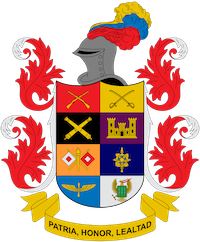Response to the Stockholm Peace Research Institute 2010 Report
Abstract
This paper seeks to prove empirically and theoretically how military spending represents an externality with respect to growth, as well as the level of impact and productivity that military spending generates with respect to economic growth.
It starts from Paul Samuelson's postulates, and leads to what is called "The efficient frontier", which shows how social spending is affected by defense and security spending, demonstrating how in Colombia this postulate is not fulfilled. To conclude that the defense and security policy is an illusion subject to the conjuncture and the political cycle, and that as long as it is not regulated and isolated from the ups and downs of public opinion, the sustainability of the security and defense policy will be altered, largely due to the lightness with which the analysis of these documents is approached.
Downloads
References
Barro, R.J. (1974). Are Government Bonds Net Wealth? Journal of Political Economy, 82: 1095-1117.
Barro, R.J. (1979). On the Determination of the Public Debt. Journal of Political Economy, 87: 940-971.
Barro, R.J. (1986). U.S. De cits since WorldWar II. Scandinavian Journal of Economics, 88: 195-222.
Barro, R.J. (1987). Government Spending, Interest Rates, Prices and Budget De cits in the United Kingdom, 1701-1918. Journal of Monetary Economics, 20: 221-247.
Barro, R.J. (1989). The Ricardian Approach to Budget De cits. Journal of Economic Perspectives, 3: 37-54.
Barro, R.J. (1995). Optimal Debt Management. NBER Working Paper, 5327.
Barro, R.J. (1997). Optimal Management of Indexed and Nominal Debt. NBER Working Paper, 6197.
Barro, R.J. & Sala-i-Martin, X. (1992). Convergence. Journal of Political Economy, 100(2), 223-51, University of Chicago Press.
Feder, G. (1983). On exports and economic growth. Journal of Development Economics, 12, 59-73.
Feder, G. (1986). Growth in semi-industrial countries: A statistical analysis, in: H.B.
Grautoff, M., & Chavarro, F. (2009). Análisis del gasto militar desde la perspectiva de la economía de la defensa: el caso colombiano 1950-2006. Ecos de Economía, 28, 199-237, Universidad Eafit.
Solow, R. (1956). A Contribution to the Theory of Economic Growth. Quarterly Journal of Economics, 70, 65-94.
Samuelson, P. (1979). Economics. 10th ed., New York: McGraw-Hill.
Samuelson, P. (1954). Diagrammatic Exposition of a Theory of Public Expenditure. Quarterly Journal Economic.













